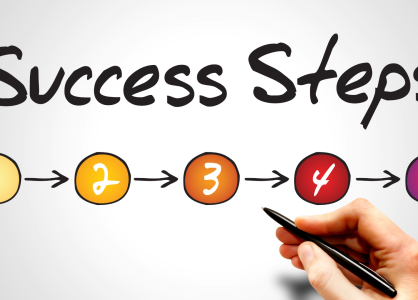Effective governance is the backbone of any successful organization, ensuring accountability, transparency, and compliance across all operations. Governance isn’t a one-time effort—it’s a continuous lifecycle that evolves with the organization’s growth, external regulations, and industry dynamics.
In this article, we’ll break down the governance lifecycle step-by-step and explore how organizations can master each phase to build a resilient and sustainable governance framework. We’ll also highlight how MPG (My Premium Governance) provides tools and support to simplify and strengthen governance processes.
1. Establishing Governance Foundations
Every governance journey begins with setting the groundwork. This phase involves defining the organization’s mission, values, and core policies, which act as guiding principles for governance.
- Key Activities:
- Develop a governance charter outlining roles, responsibilities, and decision-making structures.
- Create a framework for risk management, compliance, and ethical standards.
- Identify stakeholders, including board members, management, and external advisors.
- Critical Success Factors:
- Clear communication of governance policies across the organization.
- Alignment of governance goals with organizational objectives.
Establishing strong foundations ensures that governance practices align with the organization’s vision and set the tone for ethical and accountable operations.
2. Risk Assessment and Policy Development
Once the foundations are laid, organizations must identify potential risks and develop policies to mitigate them. This step ensures that governance practices remain proactive and adaptive.
- Key Activities:
- Conduct regular risk assessments to identify operational, financial, legal, and reputational risks.
- Develop and implement policies to address identified risks, including data privacy, cybersecurity, and compliance policies.
- Ensure policies align with local and international regulations.
- Critical Success Factors:
- Comprehensive documentation of risks and corresponding policies.
- Regular updates to policies in response to regulatory changes or emerging risks.
Proactive risk management is a cornerstone of effective governance, enabling organizations to anticipate and address challenges before they escalate.
3. Oversight and Monitoring
The oversight phase focuses on ensuring compliance and accountability throughout the organization. Governance bodies, such as boards and committees, play a critical role in monitoring operations and enforcing policies.
- Key Activities:
- Establish oversight mechanisms, such as internal audits, compliance reviews, and performance evaluations.
- Track adherence to governance policies and address deviations promptly.
- Utilize dashboards and reporting tools to provide real-time visibility into governance metrics.
- Critical Success Factors:
- Transparent reporting and communication channels.
- Independent and objective oversight to avoid conflicts of interest.
Oversight and monitoring ensure that governance practices are not just theoretical but are actively applied and upheld across all levels of the organization.
4. Stakeholder Engagement
Governance isn’t limited to internal processes—it extends to interactions with stakeholders, including investors, customers, employees, and regulatory bodies. Transparent and meaningful engagement builds trust and reinforces the organization’s commitment to accountability.
- Key Activities:
- Maintain open communication with stakeholders through regular updates, reports, and meetings.
- Involve stakeholders in governance discussions, such as sustainability initiatives or major policy changes.
- Address stakeholder concerns and feedback promptly and effectively.
- Critical Success Factors:
- Building trust through consistency and transparency.
- Tailoring communication strategies to meet the needs of diverse stakeholder groups.
Engaging stakeholders strengthens the organization’s reputation and fosters a collaborative approach to governance.
5. Continuous Improvement
Governance is not static—it requires continuous evaluation and improvement to remain effective and relevant. Organizations must embrace a culture of learning and adaptability.
- Key Activities:
- Conduct periodic governance reviews to assess the effectiveness of policies, oversight mechanisms, and stakeholder engagement strategies.
- Benchmark governance practices against industry standards and best practices.
- Implement improvements based on lessons learned and evolving challenges.
- Critical Success Factors:
- A commitment to innovation and adaptability.
- Involvement of governance bodies in identifying and driving improvements.
Continuous improvement ensures that governance practices evolve alongside the organization’s needs and external conditions.
6. Leveraging Technology in Governance
Technology is a critical enabler of modern governance, providing tools for efficiency, transparency, and compliance.
- Key Applications:
- Digital Platforms: Centralized platforms for governance documentation, workflows, and communication.
- Data Analytics: Insights into governance metrics, risk trends, and stakeholder feedback.
- Automation: Streamlined processes for policy updates, compliance tracking, and reporting.
Organizations that embrace technology in governance can reduce administrative burdens, enhance accuracy, and improve decision-making.
How MPG (My Premium Governance) Supports the Governance Lifecycle
At MPG (My Premium Governance), we understand the complexities of managing the governance lifecycle. Our platform is designed to empower organizations with tools and resources tailored to every stage of governance. Here’s how MPG supports your governance journey:
- Comprehensive Tools: From risk assessments to compliance tracking, MPG offers a suite of tools to streamline governance processes.
- Centralized Platform: Manage all governance documentation, workflows, and communications in one secure, easy-to-access platform.
- Customizable Frameworks: Tailor governance frameworks to meet your organization’s unique needs and industry requirements.
- Expert Insights: Access guides, templates, and best practices to strengthen your governance strategy.
- Collaboration Features: Engage stakeholders, board members, and teams with seamless communication and reporting tools.
Whether you’re establishing governance foundations or driving continuous improvement, MPG is your trusted partner in achieving governance excellence. Join MPG (My Premium Governance) today and transform your governance practices into a competitive advantage!

